Welcome to the world of parenting, where every decision seems crucial and the options can be overwhelming. One essential choice for many parents is deciding between disposable and cloth diapers.
If you’ve chosen the eco-friendly and cost-effective route of cloth diapers, you might be wondering, “How many cloth diapers do you need?”
In this blog post, we’ll break down the factors to consider and help you determine the right quantity for your baby.
Factors to Consider When Choosing Cloth Diapers
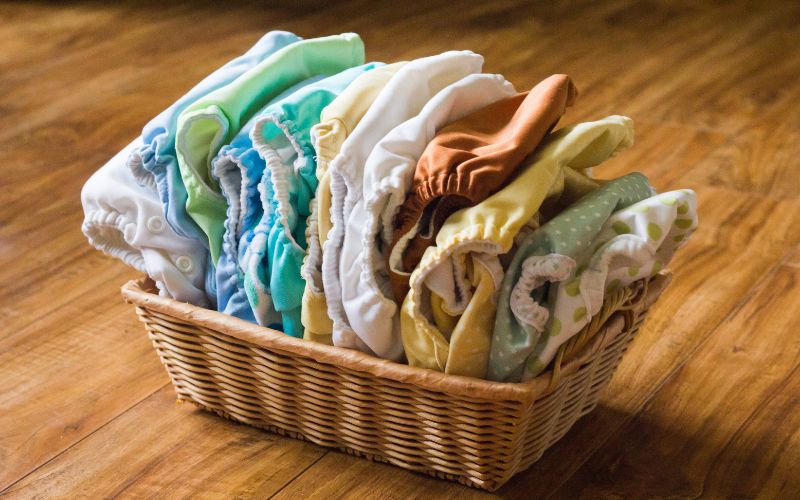
The process of selecting cloth diapers involves assessing various factors to ensure a seamless experience for both you and your baby.
1. Baby’s Age and Size
Cloth diapers are available in various sizes to accommodate the different stages of a baby’s growth. It’s important to choose the right size to ensure a proper fit.
If a diaper is too large, it may lead to leaks, while a diaper that is too small can be uncomfortable for the baby and may not provide adequate coverage.
As your baby grows, you’ll need to transition to larger sizes to accommodate their changing body shape.
2. Budget Considerations
While cloth diapering is generally more cost-effective in the long run compared to disposable diapers, there is an initial investment involved.
Different types of cloth diapers have varying costs, and the overall expense depends on the number of diapers you plan to purchase.
Consider your budget constraints and find a balance between quality and affordability. Keep in mind that cloth diapers can be reused, so the long-term savings are significant.
3. Ease of Use
Cloth diapers come in various styles, and each has its own level of convenience. Prefold diapers, which consist of multiple layers that need folding and securing, might be preferred by parents who appreciate simplicity and a more traditional approach.
On the other hand, all-in-one diapers are designed for ease of use, as they have the absorbent layer attached, making them similar to disposables in terms of application. Consider your comfort level with different diapering systems and choose the one that aligns with your preferences and lifestyle.
Some parents may prefer the convenience of all-in-one diapers, while others may find joy in the simplicity and versatility of prefolds or pocket diapers.
Difference Between Cloth Diapers VS Disposable Diapers
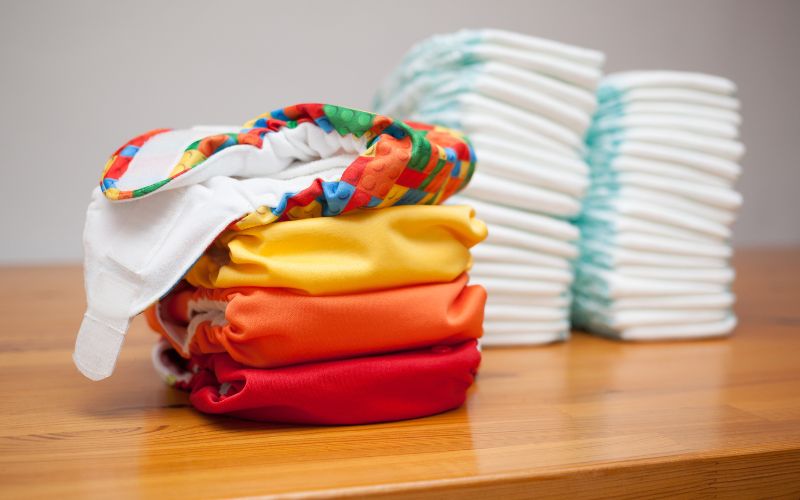
Here we can define a little bit differences between disposable diapers and cloth diapers.
| Aspect | Cloth Diapers | Disposable Diapers |
|---|---|---|
| Material | Natural fabrics like cotton, bamboo, hemp; may include a waterproof outer layer | Super-absorbent polymers, plastics, chemicals |
| Cost | Higher initial investment, but can be cost-effective in the long run | More expensive over time |
| Environmental Impact | Reusable, but washing and manufacturing have environmental impacts | Contributes to landfill waste |
| Convenience | Requires more effort, may not be as convenient on the go | Convenient for quick changes, especially when traveling |
| Absorbency | May need more frequent changes, not as absorbent as some disposables | Enhanced with chemicals for longer dry periods |
| Rashes and Sensitivity | Generally better for sensitive skin, but rashes can still occur | Some babies may develop rashes due to chemicals |
| Variety and Sizes | Come in different styles, but may have fewer size options | Widely available in various sizes and designs |
| Maintenance | Require regular washing, may need stain treatment and special care | Easy to use and dispose of, no washing required |
| Long-Term Use | Can be reused for subsequent children or passed on to others | Single-use and disposed of after each use |
In choosing between disposable and cloth diapers, it often comes down to personal preferences, lifestyle, and values regarding cost, convenience, and environmental impact. Some parents even opt for a combination of both, using disposables when out and about and cloth at home.
Advantages of Cloth Diapers
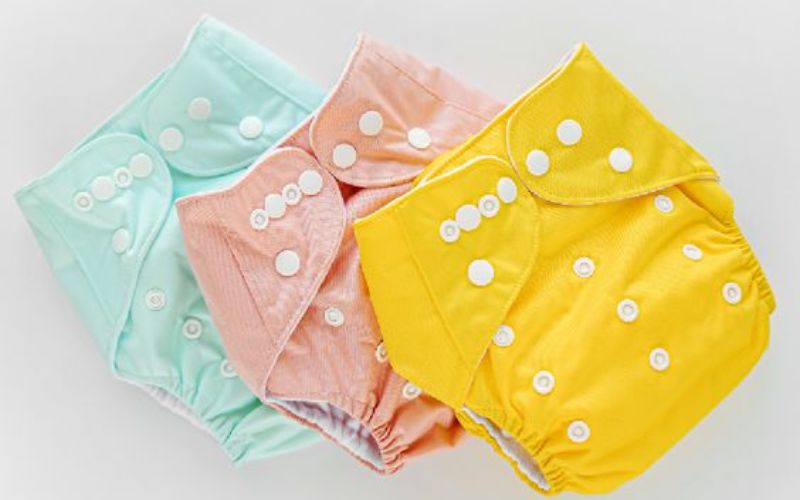
Cost-effectiveness
Cloth diapers are known for providing substantial cost savings over the long term, despite a potentially higher initial investment.
While the upfront cost of purchasing cloth diapers and related accessories may seem significant, the ongoing expense of disposable diapers can accumulate to a much higher total.
Cloth diapers can be reused multiple times, and with proper care, they can last through multiple children.
This makes them a financially prudent choice, especially for parents looking to manage their budget effectively.
Reduced Environmental Impact
Disposable diapers contribute significantly to environmental issues, as they often end up in landfills where they can take hundreds of years to decompose.
Cloth diapers, however, are reusable, and their environmental impact is substantially lower. By choosing cloth diapers, parents contribute to reducing the overall burden on landfills and promote a more sustainable approach to diapering.
While the manufacturing and laundering of cloth diapers do have environmental impacts, the long-term benefits in waste reduction make them a greener choice.
Health Benefits for Babies
Cloth diapers are typically made from natural, breathable materials, reducing the risk of allergic reactions or skin irritations in babies.
Unlike some disposable diapers that contain chemicals, fragrances, and other potential irritants, cloth diapers provide a more gentle and natural option for sensitive baby skin.
The breathability of cloth diapers is particularly advantageous, as it helps to prevent diaper rash, a common concern for parents.
Good air circulation reduces moisture, keeping the baby’s skin drier and healthier, which can be especially beneficial for those with more sensitive skin or a predisposition to skin issues.
Choosing cloth diapers can thus contribute to the overall well-being and comfort of infants.
Diaper Counts by Age: How Many Cloth Diapers Do You Need?
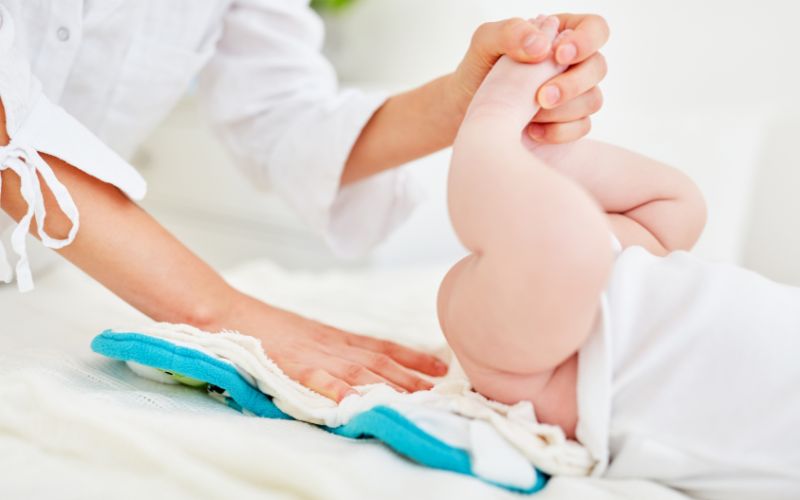
Newborns
- Frequency: Newborns typically need more frequent diaper changes compared to older babies. They may require changing every 2 to 3 hours or even more frequently, as they have small bladders and are not yet able to control their bodily functions effectively.
- Quantity: In the first few weeks of life, newborns can go through an average of 8 to 12 diapers per day. This number may decrease as the baby grows and their bladder capacity increases.
Infants (6-12 months)
- Frequency: As infants grow, they may start to develop more regular bathroom habits. Diaper changes may still be needed every 3 to 4 hours, but the baby’s ability to sleep for longer periods without needing a change may improve.
- Quantity: The average diaper usage for infants in this age range can be around 6 to 10 diapers per day. The variability depends on individual factors such as diet, fluid intake, and overall health.
Toddlers (18+ months)
- Frequency: Toddlers are likely to have more control over their bodily functions, and they may start showing signs of potty training readiness. Diaper changes can occur less frequently, perhaps every 4 to 6 hours or even longer during naps and overnight.
- Quantity: The number of diapers used by toddlers can decrease further, ranging from 4 to 8 diapers per day. This reduction is often associated with the transition to potty training and the child’s increasing ability to communicate their needs.
Note:
It’s important to note that these are general guidelines, and individual variations exist. Factors such as the child’s metabolism, diet, and overall health can influence diaper usage. Additionally, some children may potty train earlier or later than others, impacting the need for diapers in the toddler stage. Parents should be attentive to their child’s cues and adapt diaper-changing routines accordingly.
CLOTH DIAPER CALCULATOR
It seems like you’ve mentioned that a calculator has been finded to approximately determine the number of diapers you may need for your children in a day.
Here is the link: https://bayrli.com/pages/cloth-diaper-calculator
Types of Cloth Diapers
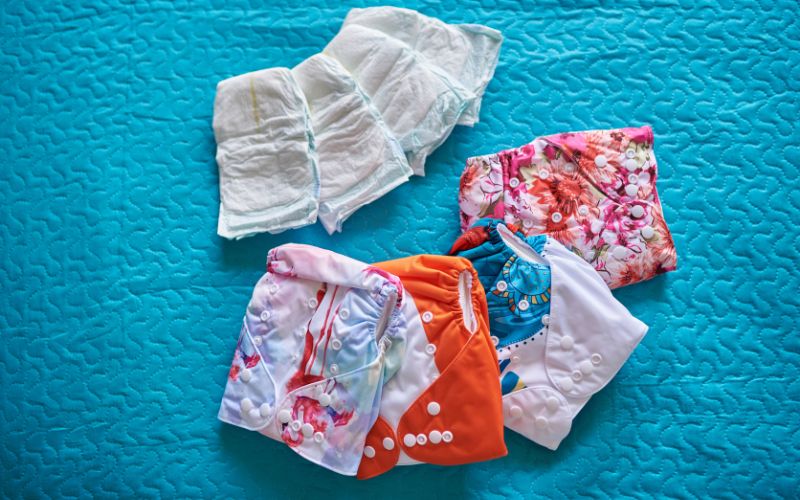
1. Prefold Diapers
- Structure: Rectangular pieces of fabric divided into three sections, with the middle section being the most absorbent.
- Usage: Fold into thirds and lay inside a waterproof diaper cover. Fasten with diaper pins or use a snappi for closure.
- Features: Economical, versatile, and easy to wash. Can be used as burp cloths or inserts for pocket diapers.
2. Flat Diapers
- Structure: Square-shaped, single-layer pieces of fabric.
- Usage: Fold to fit your baby’s size and secure with diaper pins or a snappi. Requires a separate waterproof cover.
- Features: Quick-drying, customizable absorbency, and versatile for various folding techniques.
3. Fitted Diapers
- Structure: Contoured shape with elastic at the legs and waist for a snug fit.
- Usage: Fasten with snaps or Velcro closures. Requires a separate waterproof cover.
- Features: Provides a secure fit, excellent containment, and often comes in cute designs. Requires less folding than prefolds or flats.
4. Pocket Diapers
- Structure: Outer layer with a moisture-wicking inner layer and a pocket for inserting absorbent inserts.
- Usage: Stuff the pocket with inserts before use.
- Features: Customizable absorbency, easy to use, and dries faster than all-in-one diapers. Inserts can be adjusted based on your baby’s needs.
5. All-in-One (AIO) Diapers
- Structure: One-piece design with built-in absorbent layers and a waterproof outer layer.
- Usage: Similar to disposable diapers, simply put on the baby.
- Features: Convenient, no assembly required, but may take longer to dry due to the all-in-one design.
6. All-in-Two (AI2) Diapers
- Structure: Waterproof cover with snap-in inserts.
- Usage: Reuse the cover by changing only the insert. Quick to dry.
- Features: Versatile and economical, as you only need to change the wet insert, not the entire diaper.
7. Hybrid Diapers
- Structure: Reusable cover with the option to use cloth or disposable inserts.
- Usage: Provides flexibility based on your needs.
- Features: Versatility for travel or daycare, as you can switch between cloth and disposable inserts.
8. One-Size Diapers
- Structure: Adjustable diapers designed to fit babies from birth to potty training.
- Usage: Typically feature snaps or elastic to resize the diaper as the baby grows.
- Features: Cost-effective in the long run as the same diapers can be used throughout various stages of a child’s growth.
9. Newborn Diapers
- Structure: Specifically designed for smaller babies, often with a cutout for the umbilical cord stump.
- Usage: Ideal for the first few weeks or months until the baby grows into one-size diapers.
- Features: Ensure a proper fit for newborns and provide comfort around the umbilical area.
10. Training Pants
- Structure: Resemble underwear with added layers for absorbency and often a waterproof layer.
- Usage: Aid in the transition from diapers to underwear during potty training.
- Features: Allows toddlers to pull them up and down, helping them learn the mechanics of using the potty. Provides some protection against small accidents.
Choosing the right cloth diaper depends on your personal preferences, lifestyle, and the specific needs of your baby.
How to Wash Cloth Diapers?
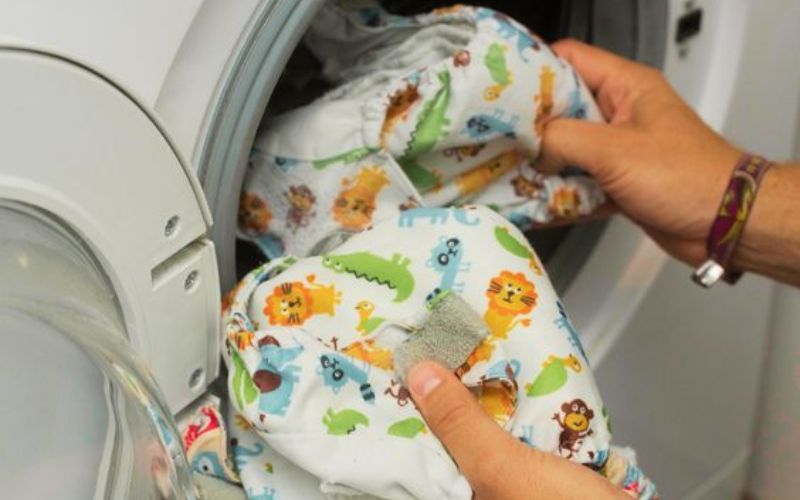
Washing cloth diapers involves a few steps to ensure they are thoroughly cleaned and sanitized.
Step 1: Preparing Diapers for Washing
1. Remove Solid Waste
- Shake off any solid waste into the toilet. If your baby is exclusively breastfed, you can skip this step as breast milk poop is water-soluble.
2. Rinse or Soak
- You can choose to do a quick rinse or soak to prevent stains and odors. Some people use a wet pail, while others prefer a dry pail method. A wet pail has water and possibly some detergent, while a dry pail is just a container without water. Consult your diaper manufacturer’s guidelines for recommendations.
Step 2: Washing Machine Settings
1. Cold Rinse
- Start with a cold rinse to remove any remaining debris and excess urine. This helps prevent stains from setting.
2. Hot Wash
- After the cold rinse, set your washing machine to a hot water cycle. Use a good-quality detergent specifically designed for cloth diapers. Follow the detergent manufacturer’s guidelines for the recommended amount.
Step 3: Drying
Dry
- Once the hot wash is complete, you can either air-dry the diapers or use a dryer. Line drying is a great option to prolong the life of the diapers and reduce energy consumption.
Additional Tips
1. Avoid Fabric Softeners and Fragrances
- Fabric softeners and fragrances can leave residues on diapers and reduce their absorbency. Stick to a diaper-friendly detergent without additives.
2. Check Manufacturer Recommendations
- Follow the care instructions provided by the diaper manufacturer. Some diapers may have specific washing guidelines to maintain their performance and durability.
3. Sunning for Stains
- If you notice stains on your diapers, natural sunlight can help bleach and remove them. Hang the diapers in direct sunlight for a few hours.
4. Diaper Liners
- Consider using liners to catch solid waste. This makes cleanup easier and reduces the need for extensive rinsing.
5. Washing Frequency
- Aim to wash diapers every 2-3 days to prevent odors and mold. Storing them for longer periods without washing can lead to bacterial growth and make cleaning more challenging.
FAQ’s
How often should I change cloth diapers?
Cloth diapers should be changed every 2-3 hours or more frequently for newborns.
Can I use cloth diapers at night?
Yes, many parents successfully use cloth diapers at night by choosing more absorbent options like fitted or pocket diapers.
Are cloth diapers easy to clean?
With proper washing routines, cloth diapers are easy to clean. Following manufacturer guidelines is crucial.
Do cloth diapers save money in the long run?
Yes, despite the initial investment, cloth diapers are more cost-effective in the long run compared to disposables.
Can I use cloth diapers while traveling?
Yes, with a bit of planning and the use of wet bags, cloth diapering on the go is entirely feasible.
Bottom Line
In conclusion, cloth diapers are a fantastic eco-conscious choice for parents.
By understanding your baby’s needs and investing in a well-rounded stash, you can make cloth diapering a seamless and rewarding experience.
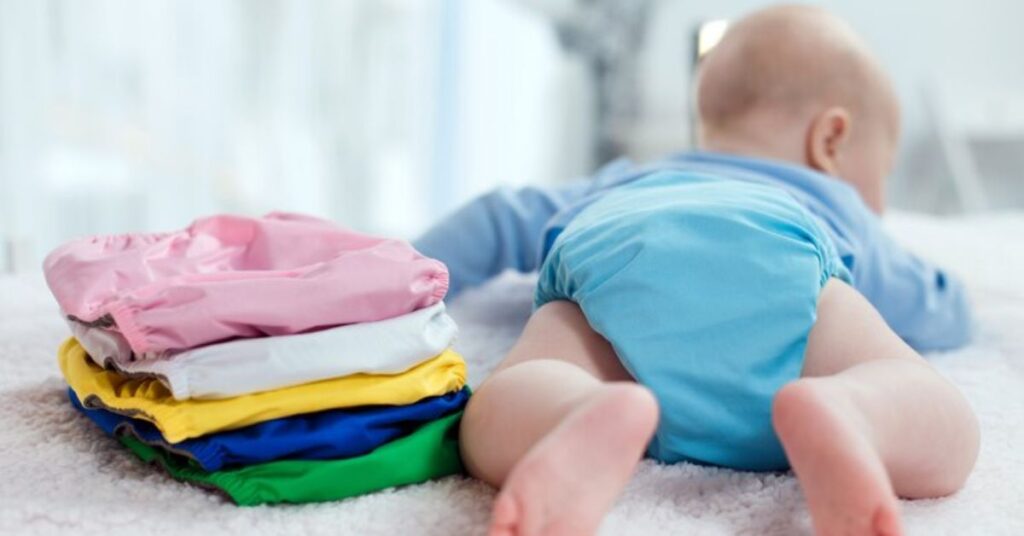



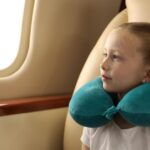
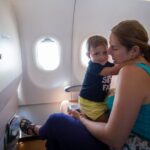

You’re incredible!